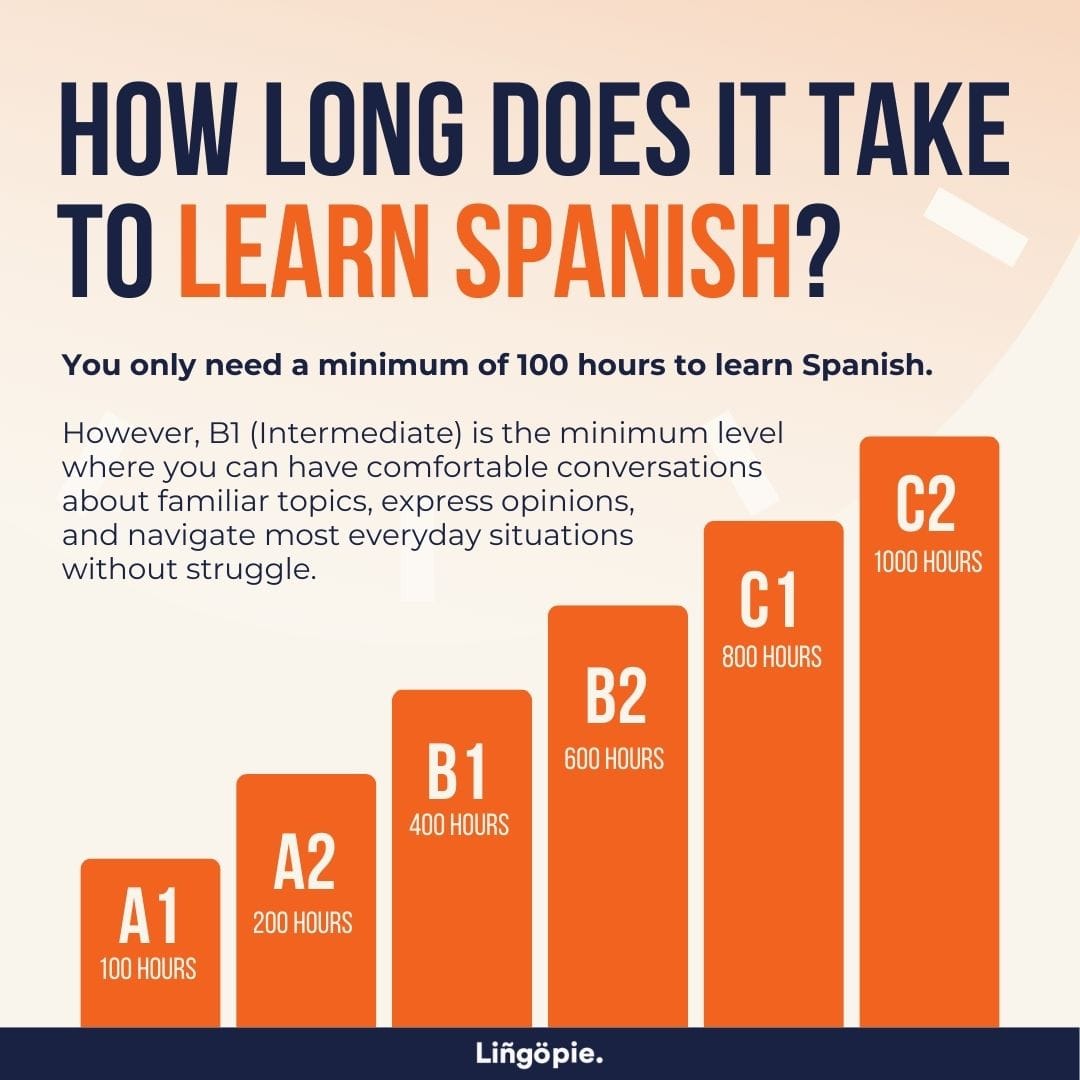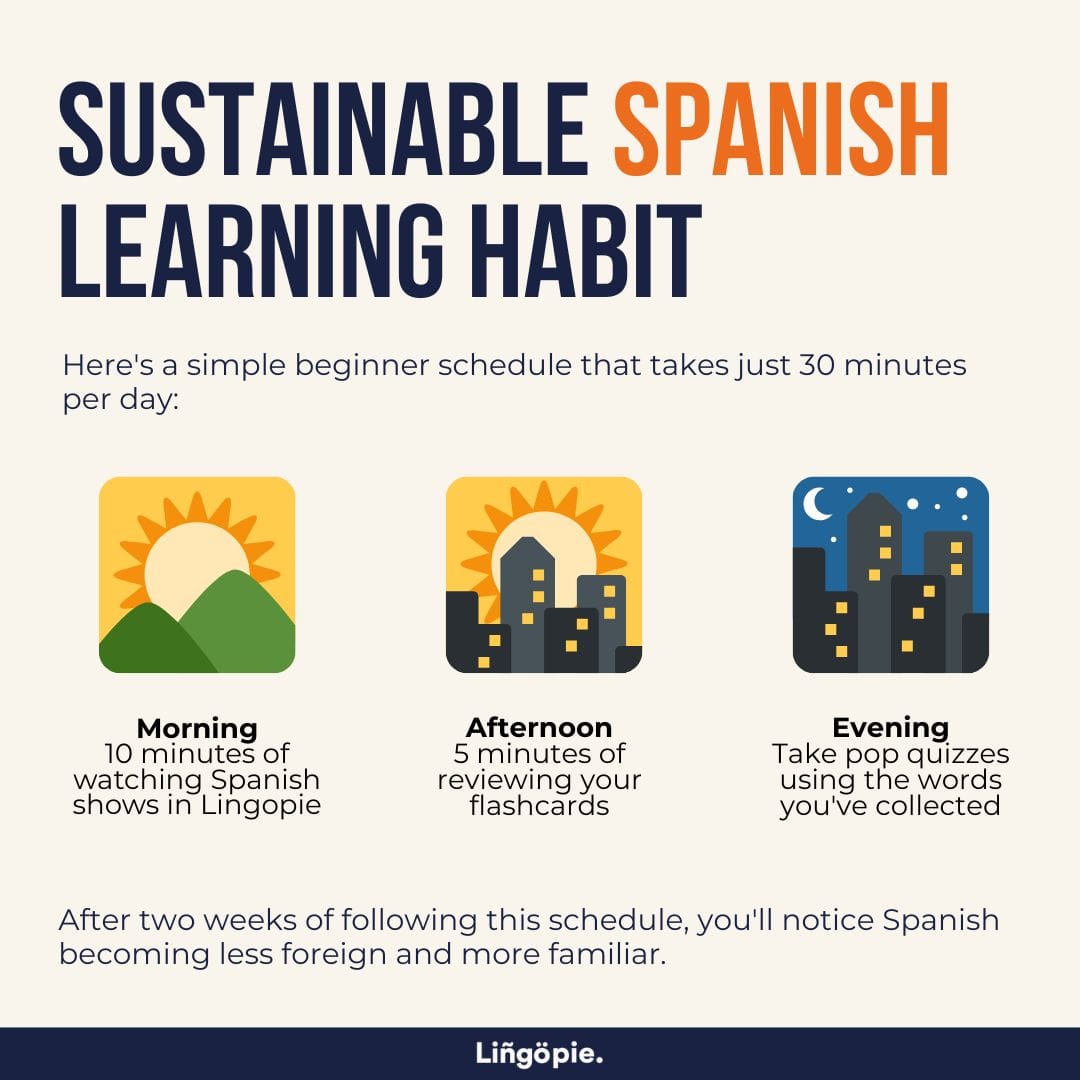You’ve decided to learn Spanish? Well, good job on that! Maybe you’re planning a trip to Mexico, want to connect with Spanish-speaking friends, or just love how the language sounds. Whatever your reason, you’ve made a great choice since Spanish is one of the easiest and most practical languages to learn today.
But here's the thing: staring at that first "¡Hola!" can feel overwhelming when you're a complete beginner. With countless apps, courses, and YouTube videos all claiming to be the “best” method, how do you actually get started?
In this article, I’ll break down the most effective ways to learn Spanish when you’re starting from zero.
- 3 Rules For Using Spanish Accent Marks [Guide]
- Math In Spanish: A Complete Beginner’s Guide
- 10 Best Spanish Short Stories For Beginners

The Truth About “Natural” Language Learning
Let's clear something up right away: adults don't learn languages exactly like children do.
As kids, we absorbed our native language through constant immersion and without worrying about grammar rules or vocabulary lists. Many language products promise this same “natural” learning experience, but what they don’t tell you is that your adult brain works differently.
The good news? Your mature brain has advantages that children don't have. You understand language concepts, can recognize patterns, and make connections that speed up your learning. The most effective Spanish learning methods for beginners leverage these adult strengths while still incorporating elements of natural acquisition.

How Long Does It Take to Learn Conversational Spanish?
Everyone wants to know how long it takes to become conversational in Spanish. The honest answer: it depends on your definition of "conversational" and how consistently you practice.
With 30 minutes of daily practice combining the methods above:
- After 1 month: You'll recognize common words and understand simple phrases
- After 3 months: You can have basic exchanges about familiar topics
- After 6 months: You can have simple conversations, though with many mistakes
- After 12 months: You can discuss a variety of topics, though not fluently
Remember that progress isn't linear – you'll experience plateaus and sudden breakthroughs. Trust the process, and don't get discouraged when improvement seems slow.
Five Proven Methods for Complete Beginners
1. Streaming Content with Spanish Subtitles
One of the most enjoyable ways to learn Spanish is through watching TV shows and movies you actually like. Platforms like Lingopie specialize in language learning through streaming content, offering Spanish shows with interactive dual subtitles.
When you use Lingopie’s subtitles, you get an instant translation and tips related to the word you tapped. This contextual learning helps your brain connect words with real situations rather than memorizing isolated vocabulary lists.
2. Structured Courses for Grammar Foundations
While not as exciting as watching Spanish shows, a structured course gives you the fundamental building blocks of the language that will make everything else easier. Remember, learning basic Spanish grammar patterns early helps you recognize how sentences are formed. Instead of memorizing hundreds of phrases, you'll understand how to create your own sentences.
3. Spaced Repetition Flashcards

Your memory works better when you review information just before you’re about to forget it. Digital flashcard features you’re (like what you'll find in Anki or Lingopie) use algorithms to show you words at the optimal time for retention.
Why it works for beginners: Vocabulary is a numbers game at first – you need to learn enough words to start understanding basic content. Spaced repetition is simply the most efficient way to build vocabulary.
4. Language Exchange Partners
Speaking with real people forces your brain to process Spanish actively rather than passively. Apps like Tandem or HelloTalk connect you with Spanish speakers who want to learn your language. Even simple conversations with native speakers will give you practical experience forming sentences and understanding responses in real-time – skills you can’t develop just by studying.
5. Daily Immersion Habits
Small doses of Spanish in your everyday life add up quickly. Change your phone language to Spanish, listen to Spanish music during your commute, or label household items with sticky notes. These micro-learning moments create multiple touchpoints with the language throughout your day without requiring dedicated study time.
Why Combining Approaches Gives You the Best Results
No single method gives you everything you need to learn Spanish effectively. The most successful beginners use a combination of approaches that cover different learning needs:
- Content streaming (like Lingopie) provides enjoyable, contextual exposure to real Spanish
- Grammar courses give you a structural understanding
- Flashcards build your vocabulary efficiently
- Conversation practice develops real-world communication skills
- Immersion habits integrate Spanish into your daily life
Think of these as the five ingredients in your Spanish learning recipe – missing any one makes the result less satisfying.

Creating a Sustainable Spanish Learning Habit
The most effective way to learn Spanish isn't about finding the perfect method, but consistency. Ten minutes daily beats two hours once a week.
Here's a simple beginner schedule that takes just 30 minutes per day:
- Morning (10 minutes): Watch Lingopie content and click on unfamiliar words
- Afternoon (5 minutes): Review the flashcards created from your morning's clicked words
- Evening (15 minutes): Take pop quizzes using the words you've collected
After two weeks of following this schedule, you'll notice Spanish becoming less foreign and more familiar. Feeling serious about learning Spanish? If you're nodding along, then follow this 30-day plan that takes you from zero to your first simple Spanish conversations:
Week 1: Building Foundations
- Day 1-3: Learn the Spanish alphabet and basic pronunciation
- Day 4-7: Master 50 high-frequency words and basic greetings
Week 2: First Sentence Structures
- Day 8-10: Learn subject pronouns and the verb "ser" (to be)
- Day 11-14: Add 5-10 essential verbs in present tense
Week 3: Expanding Expression
- Day 15-17: Build question words and simple questions
- Day 18-21: Add basic adjectives and noun gender/agreement
Week 4: Conversation Building
- Day 22-25: Learn conversational connectors and responses
- Day 26-28: Practice basic dialogues about yourself
- Day 29-30: Have your first 5-minute conversation with a native speaker
This plan requires just 30 minutes daily and gives you a structured path to follow instead of randomly jumping between resources.
Start Simple And Stay Consistent
As we learned in this post, the best way to learn Spanish as a complete beginner isn’t about finding the perfect method. It’s about starting simply and staying consistent.
Begin with enjoyable content through a platform like Lingopie to develop your ear for the language. Support this with some structured grammar lessons and flashcards for the most common words. As you build confidence, add conversation practice.
Most importantly, make Spanish a part of your daily life rather than an occasional activity. Even five minutes a day will move you forward when done consistently.
¡Buena suerte! (Good luck!)





![Language Learning with Netflix [2025 Guide]](/blog/content/images/2023/05/Netflix-AD.jpg)
![What's The Best Way To Learn Japanese? [Guide]](/blog/content/images/size/w1200/2025/04/Best-way-to-learn-Japanese.jpg)
![30+ Modern English Slang Terms For Money [Guide]](/blog/content/images/size/w300/2025/06/Slang-term-for-money.jpg)
![5 Official Spanish Language Tests To Show Your Proficiency Level [Guide]](/blog/content/images/size/w300/2025/06/Spanish-Language-Tests.jpg)

![Why Memorizing Spanish Words Won’t Make You Fluent [Tips]](/blog/content/images/size/w300/2025/06/how-to-practice-spanish-vocabulary.jpg)